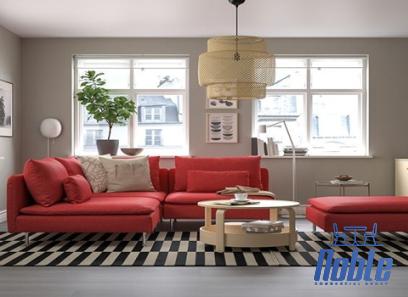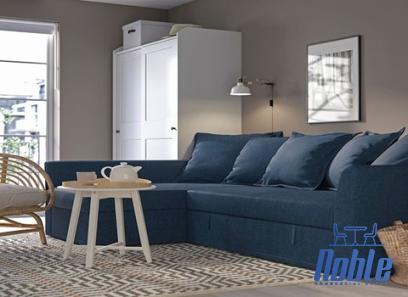What are a dining room and buffet sideboard? A sideboard or buffet can be used in almost any size for dining rooms in Melbourne. But what is this piece of furniture for, and what size should it be? Keep reading, and you will wonder how you have survived so long without this handy item. What is a sideboard? A sideboard, also known as a buffet table, is a common piece of furniture in dining rooms that provides additional storage. There are usually cabinets and drawers for dining-related items such as glassware, cutlery, crockery, candles, napkins, and tablecloths. The top side of the sideboard is often used as a shelf for decorative items you want to display or as an additional surface to place plates of food for events or gatherings. Potato chips When shopping, it’s okay to use the terms sideboard, buffet, and credenza interchangeably.
A subtle difference between them has to do with the legs. Sideboards have short, thick legs and may include hatches for display. The buffets have high legs and do not have hatches. Sideboards have low legs or no legs and usually have sliding cabinet doors. What is this used for? A buffet or sideboard is designed to accommodate ample storage of dinnerware, cutlery, and linens for special and formal occasions typically used in the dining room. It also serves as a surface for placing plates and trays. When not in service mode, the top surface is typically used to display a symmetrical array of decorative accents such as candles, lamps, and artwork. What style should it be? Buffets and sideboards can match your dining room set and decor, or they can be radically styled for a more modern and eclectic look. Even if your dining set doesn’t come with a buffet or sideboard, you can still finish it in a similar style, even if it doesn’t match perfectly. Or, consider choosing a painted, vintage, or antique buffet or sideboard to add bright, contrasting color to any dining room style. A pastel white or cream buffet or sideboard will look great in a cottage, French country, or farmhouse-style dining room. Potato chips Sideboards with open shelves or glass cabinet doors are perfect for small dining rooms. The pieces look bright and give the space an airy feel. A buffet with closed cabinets looks heavy and provides a larger dining space.
Sizing Estimating the size of your sideboard or buffet may seem easy. Still, taking thorough measurements is always safer to avoid headaches later. Step 1 – Measure Other Furniture Consider other furniture currently in the room. You don’t want your bench percentage to be out of proportion to everything else. The sideboard and buffet table should be at least the same height as the dining room table but ideally a few inches higher. The most common height for a sideboard or buffet table is 30 to 36 inches tall. Don’t be afraid that it will be a different width than your dining table. (There are no rules here!) Step 2: Measure your space. Measure your space’s width, height, and depth. Make sure you don’t hit anything. If you have a window where you put the table, make sure there is a reasonable amount of space between the bottom of the window and the top of the sideboard. Also, don’t let the dresser cover heating or cooling vents (this is more common in older homes). Step 3: Ensure a Perfect Design Make sure you have enough room to easily walk around the dresser, even with open cabinets and drawers. It is recommended to leave at least 36 inches of space between the edge of the cabinet and the front of the dresser. For smaller rooms, allow at least 18″ to 24″ of clearance.
Step 4: Measure doorways and hallways. Measure the doors and hallways leading to where the buffet tables will be placed. When choosing a table, make sure the dimensions are small enough to fit in these spaces. Design choice The sideboard should complement the rest of the dining room furniture. Find a design that meets your storage and style needs. What size? Determining the correct size for a buffet can be a bit tricky. Sideboards are usually long and low, but they should be sized to fit in your dining room and balance with your table. Here are some guidelines to consider. The average buffet depth (front to back) is 20″ to 22″. Make sure your dresser isn’t too deep, as you need at least 24 inches of space between furniture for comfortable circulation. The average length of the buffet (from left to right) is 60 inches. A dining table of the same length or longer is fine. But a 60-inch-long sideboard can overwhelm a small 48-inch-long table that seats four. How tall is it? You also want your buffet to be at the perfect height so you can comfortably serve food from above. The standard height for kitchen counters is 36 inches. Just the right height for a dining room buffet. However, some buffets have a height of 34″ to 38″. Sideboards look balanced in the dining room when they are taller than standard 28″ to 30″ dining tables. Common materials Wooden: Wooden sideboards are usually the most popular as they are perfect for incorporating natural elements into any room. With a variety of options, from rustic distressed wood to plain white wood, a wood table will suit any style. Metal – Metal sideboards and buffet tables can add texture and an industrial feel to your space. To keep your metal looking its best, clean it regularly and use a mild soap and water mixture to clean off marks. Marble/Granite: If you are willing to spend a little more, marble and granite are always attractive. When cleaning, use light products so as not to damage the marble. Plastic/Acrylic: Plastic and acrylic sideboards are modern and clean-lined. These add a touch of sophistication and simplicity to any room. Acrylic is particularly rough, so always use a microfiber cloth when cleaning, as paper towels can scratch the surface.










Your comment submitted.